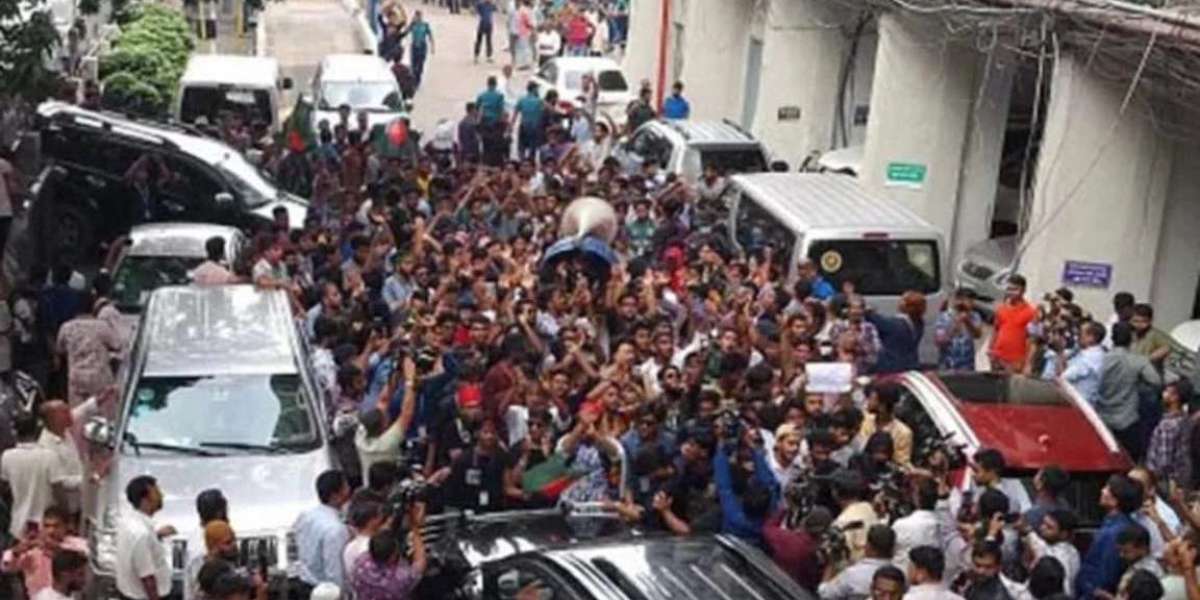Jumbangla Desk: The historic 'Lost Mosque' is one of the oldest mosques. Which has been renamed as 'Jamey'-As Sahaba Jame Masjid. Jamey-as Sahaba Jame Masjid in Lalmonirhat is one of the oldest examples of Islam propagation in Bangladesh. It is considered to be the first mosque in the Asian continent built about 1400 years ago. This mosque is located in Ramdas Mauza of Panchgram Union of Lalmonirhat Sadar Upazila, one kilometer south of Rangpur-Kurigram highway.
Around 1986, surprisingly, this ancient mosque was found at Lalmonirhat, which stands as a royal witness to the early history of the arrival of Muslims in Bangladesh.
Incident of rescue of the mosque:
The lost mosque was discovered in the middle of a forest in Ramdas village of Panchagram union of Lalmonirhat. At one time, the local people did not enter the half of this forest for fear of animals and snakes. Then in 1983-84, the locals took the initiative to clear the half of this forest for cultivation. While clearing the undergrowth, they found that the place was higher than the flat land and there were about seven to eight mounds of earth.
When excavations began to level the site, many ancient bricks were found. Some beautiful flowers are painted on the bricks. Everyone thought it might be the ruins of an old zamindar or royal palace. But an incident on 10 Muharram 1986 made the locals think.
A man named Ayub Ali (57) picked up a brick from a pile of bricks like many others and saw something written on the brick. It is an ancient inscription washed well in water to read clearly. In which it is written, 'La ilaha illallahu muhammadur rasulullah, Hijri year 69.
Local people understand that it is the ruins of a lost mosque. They started to rescue the mosque with caution. Mehrabs of mosques, pulpits for sermons, etc. were discovered by reading. The 21 feet wide and tall mosque had four pillars, two of which have been destroyed. Later the people there built a new mosque with tin in the mosque and started offering prayers.
After him, the fact that the mosque was discovered gradually came to light, and local scholars and Islamic thinkers believed that the oldest sign was seen in various newspapers of the time.
The mosque was built in 69 Hijri. It is believed that Hazrat Abu Waqqas (RA) traveled to China through this area and he built a mosque here during his journey. Today there is a mosque built by him and his mausoleum in the city of Kwangta on the banks of the forgotten Kwangta River in China. This hypothesis further suggests that the lost mosque was built by Abu Waqqas (RA), as Roman and German historians record the use of the Brahmaputra basin as a trade route by Arab and Roman merchants, and several ongoing studies have identified the Brahmaputra-Tista basin as the world's largest. There is also evidence of its use as one of the oldest international trade routes.
British archeologist Tim Steele claims that there is much evidence of trade fleets of Arab and Roman merchants crossing the Brahmaputra and Teesta rivers through Sikkim from BC.
This mosque was built in 69 Hijri according to 690 AD. The foundation stone for the reconstruction of this ancient mosque was laid on Monday, February 3. Panchagram Union's former chairman Delwar Hossain presided over the Islamic Mahasammelan on this day. The new foundation of this mosque was laid by Imam Shaykh Ali Umar Yaqub Al-Abbasi, a descendant of Hazrat Abbas Radiyallahu Anhur, the uncle of Rasulullah Sallallahu Alaihi Wasallam and the founder of the Aksar Mosque in Palestine. As-Sahaba Complex will be built around the Sahaba Mosque.
It should be noted that the mosque was discovered by locals around 1983-84. This mosque is mentioned in the book called 'Rangpure Dini Dawat' written by Islamic writer Matiur Rahman Bosnia. It is also known from the history books of Rangpur district that Hazrat Abu Waqqas Radiyallahu Anhu, the cousin of Amma Bibi Amena of Rasulullah Sallallahu Alaihi Wasallam, came to Bangladesh from 620 to 626 AD to preach Islam. Also, from 1990 to 2010, the news of this mosque has been broadcasted in the international media including the country's media.
Nowadays many tourists from far and wide of the country come to visit this mosque every day. Many people try to pray at least once when they come here.-Bass
Decisions about national parties based on the opinion of political parties



















































